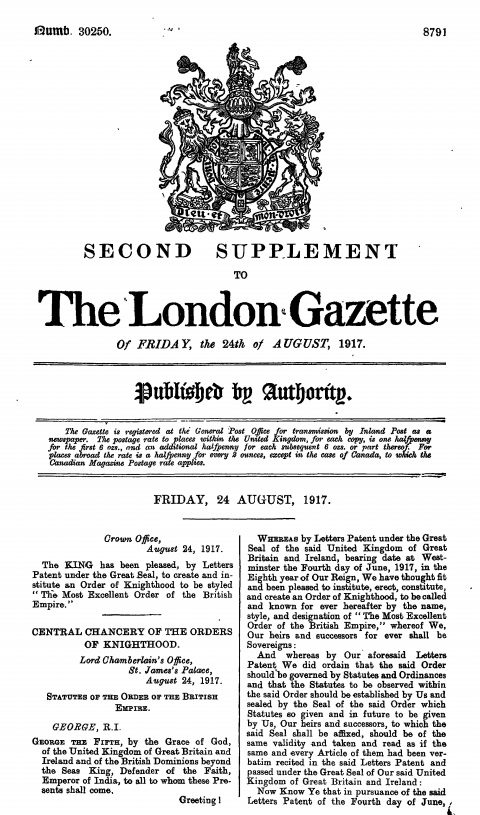 On 4 June 2017 the Order of the British Empire reached its centenary.
On 4 June 2017 the Order of the British Empire reached its centenary.
For the last 100 years, The Gazette has recorded thousands of acts of gallantry deemed worthy of the Order’s badges and medals, as well as the devoted service given by men and women across the globe to a wide range of causes and interests, including work for high remuneration and for no remuneration at all.
This series of articles tracks the development of this important source of national honours.
The Order of the British Empire (part one): 1917 to 1922
Instituted in the early summer of 1917, during the premiership of David Lloyd George, the Order was designed to reward service in World War 1, for which it was decided that existing awards were largely unsuitable.
The Order of the British Empire (part two): 1922 to 1937
Developments in the Order from the end of 1922, through to the major change to the members’ insignia in 1937.
The Order of the British Empire (part three): 1937 to 1957
Services rewarded in connection with World War 2, the responsibility for the allocation of honours being extended to Commonwealth countries, and the creation of the Order’s spiritual home in London.
The Order of the British Empire (part four): 1957 to 1993
The creation of an emblem to distinguish awards made for gallantry, John Major’s reform of the honours system, and changes to the Order’s relationship with the City of London, the High Court and the Commonwealth.
The Order of the British Empire (part five): 1993 to 2017
A period that witnessed the end of a rank-based approach to many awards, including the British Empire Medal, saw reviews that increased public involvement in the honours system, and confirmed the government’s commitment to the continuation of the Order.
Pictured: the front page of The London Gazette, August 1917, listing the first members